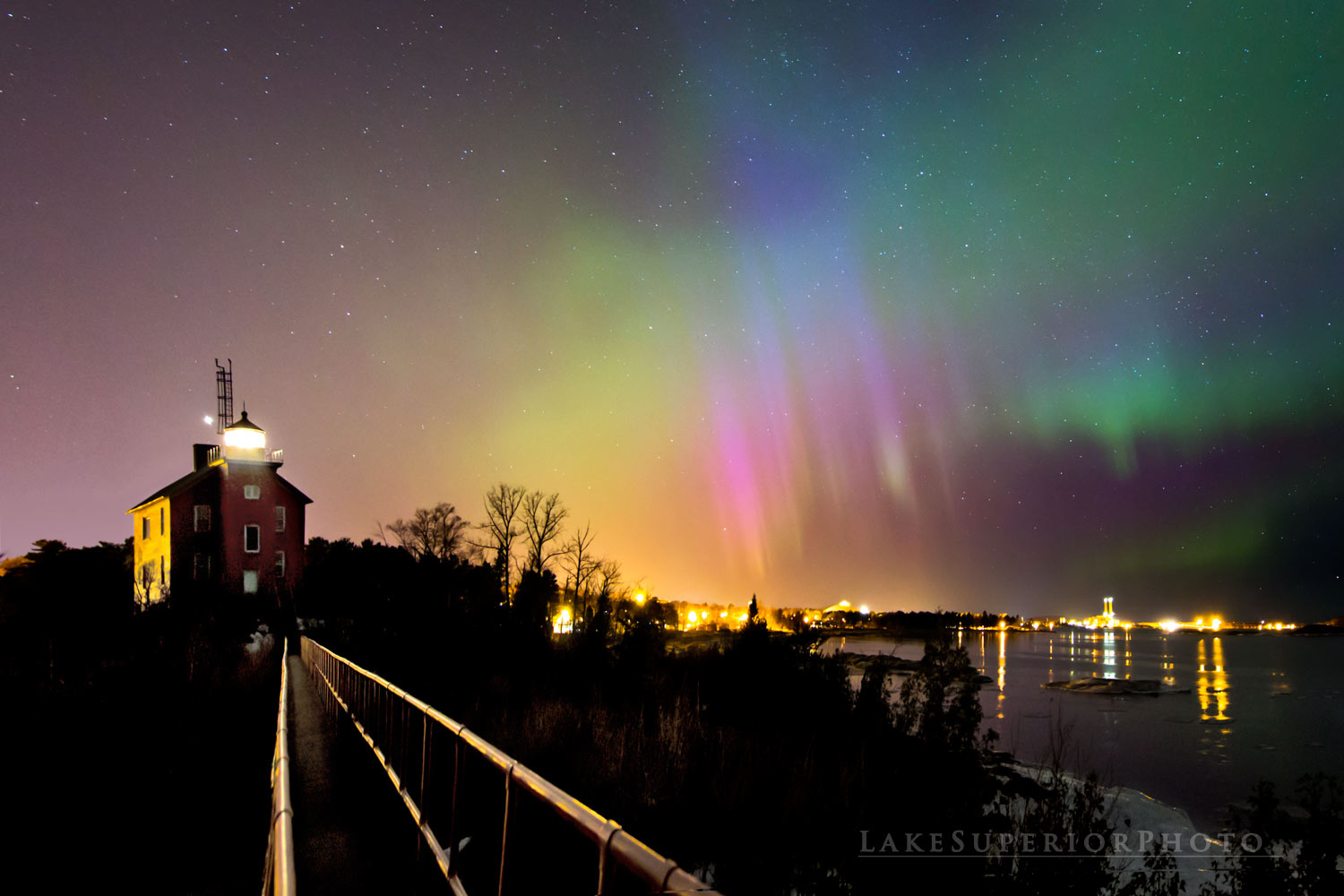Photographer Captures Rare Blue Aurora Shimmering Over Lake Superior

On St. Patrick's Day 2015, astrophotographer Shawn Malone set out once again to capture the northern lights over Lake Superior in Marquette, Michigan. But this time, instead of seeing the usual green aurora, she stumbled upon something unlike anything she had ever seen before: a vivid, rainbow-colored sky with rare, prominent streaks of blue.
Auroras that display such vibrant hues of blue are a rare sight for skywatchers – even those observing near Earth's North and South poles, where the lights are most visible. Although auroras can take on a whole spectrum of colors, green and pink are the most common. [The Most Amazing Aurora Pictures of 2016 (Gallery)]
"When I saw the large spectrum of color, including the magentas and especially the blues, I was completely shocked," Malone told Space.com in a recent email chronicling the March 17, 2015, sight. "That is the most beautiful blue I have ever captured, and I've been photographing the aurora for about 15 years now." Malone also captured a stunning time-lapse video of the blue auroras, which you can see on Malone's Facebook here.
Auroras occur when the solar wind, or charged particles emanating from the sun, meet Earth's magnetosphere. This massive magnetic field encases our planet, shielding it from the solar wind by redirecting incoming charged particles. Most of the solar wind particles are redirected back into space.
At the poles, however, the magnetosphere is more vulnerable to intruders. Particles traveling to the poles at high speeds can break through the magnetosphere's protective barrier. When these intruding particles interact with different elements in the atmosphere, the result is a spectacular display of colored light across the sky. Auroras over the North Pole are known as the northern lights, while their southern counterpart are dubbed the southern lights.
The different colors are the result of solar particles interacting with molecules in the atmosphere. Common green and yellow auroras occur when the charged particles excite oxygen molecules. Excited nitrogen can create shades of red and violet. The rare blue lights only happen when the nitrogen is ionized. [The Best Places (and Time) to See the Northern Lights]
When the sun spews extra particles toward Earth – the result of increased solar activity like sunspots – aurorae become supercharged. These auroras tend to be brighter and more colorful than usual.
Get the Space.com Newsletter
Breaking space news, the latest updates on rocket launches, skywatching events and more!
Skywatchers hoping to see a colorful display of auroras can monitor the space weather forecast for increased solar activity by following the space weather forecast from the Space Weather Prediction Group at the National Oceanic and Atmospheric Administration. When Malone shot her video of the blue northern lights over Michigan, "There had been a forecast of a relatively strong aurora," she said, "so I knew there might be a chance for some stronger activity." [How the Northern Lights Work (Infographic)]
For the most beautiful view of the auroras, a good camera can reveal colors that the human eye might not see. It wasn't until after Malone shot the time-lapse video of the aurora over Lake Superior that she realized how colorful it really was. "If you watch carefully, you can see me walking through the frame — something I would have never done if I knew exactly what I was capturing at the moment."
Email Hanneke Weitering at hweitering@space.com or follow her @hannekescience. Follow us @Spacedotcom, Facebookand Google+. Original article on Space.com.
Join our Space Forums to keep talking space on the latest missions, night sky and more! And if you have a news tip, correction or comment, let us know at: community@space.com.

Hanneke Weitering is a multimedia journalist in the Pacific Northwest reporting on the future of aviation at FutureFlight.aero and Aviation International News and was previously the Editor for Spaceflight and Astronomy news here at Space.com. As an editor with over 10 years of experience in science journalism she has previously written for Scholastic Classroom Magazines, MedPage Today and The Joint Institute for Computational Sciences at Oak Ridge National Laboratory. After studying physics at the University of Tennessee in her hometown of Knoxville, she earned her graduate degree in Science, Health and Environmental Reporting (SHERP) from New York University. Hanneke joined the Space.com team in 2016 as a staff writer and producer, covering topics including spaceflight and astronomy. She currently lives in Seattle, home of the Space Needle, with her cat and two snakes. In her spare time, Hanneke enjoys exploring the Rocky Mountains, basking in nature and looking for dark skies to gaze at the cosmos.









